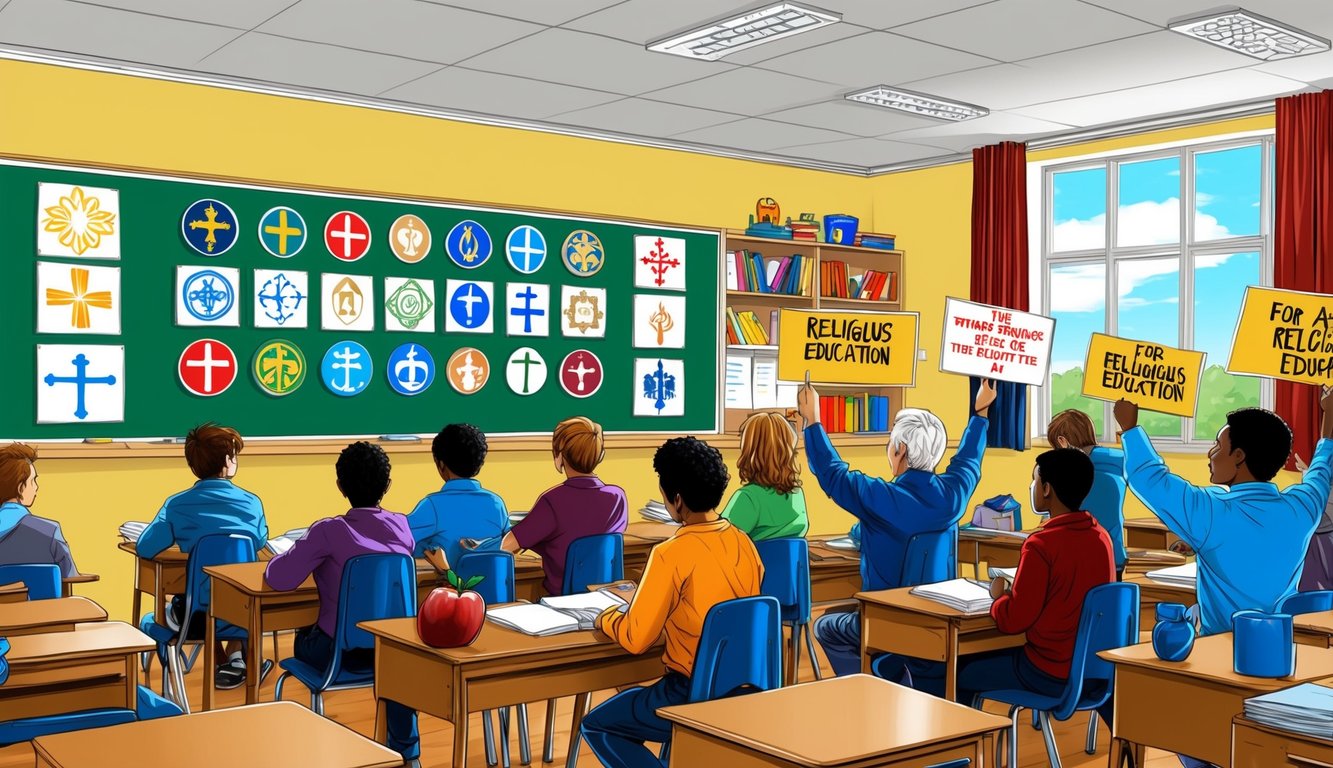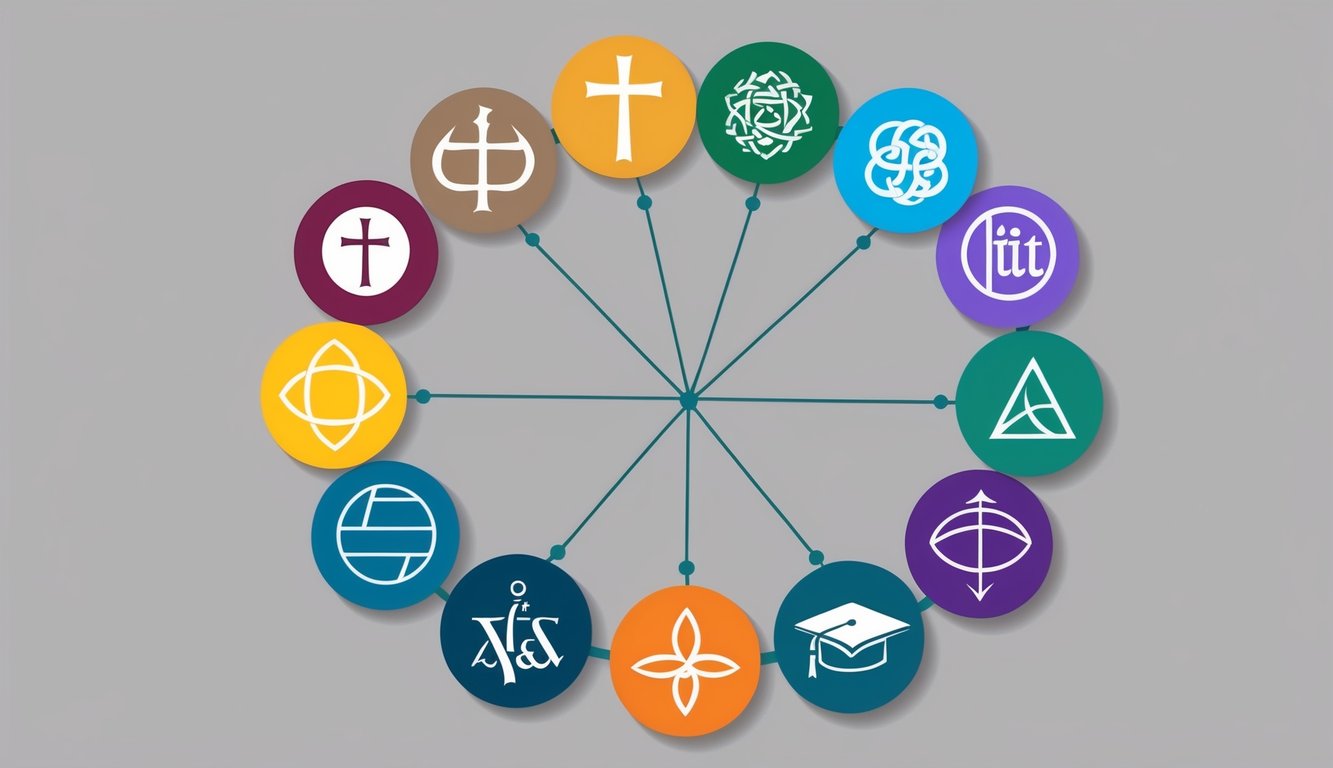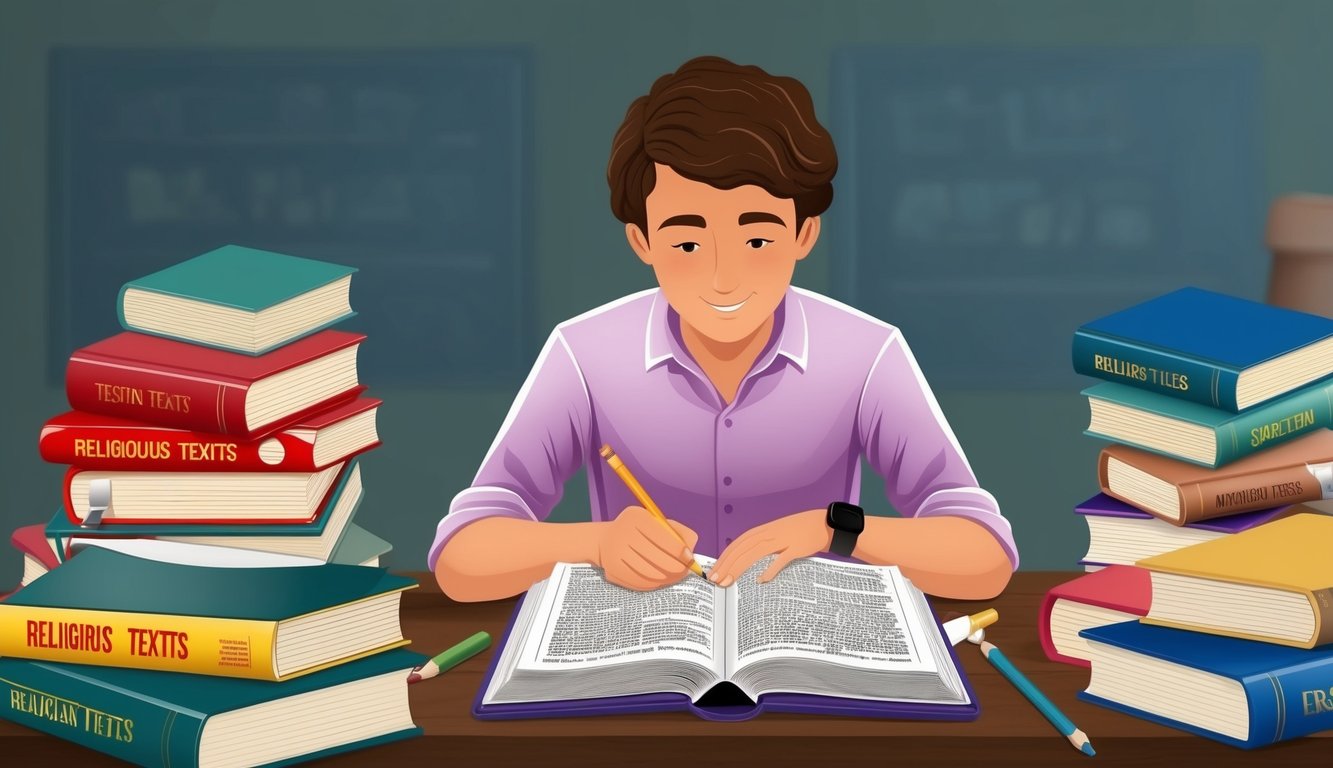Don’t Miss Out On This Unique Astrological Opportunity
Are you tired of spinning your wheels and getting nowhere? Simply put, you’re out of sync: you’re out of alignment with your astral configuration.
But: there’s a kind of map that can help you reclaim your alignment. Think of it as your own personal blueprint to success and happiness: a blueprint that will help you live your most amazing life.
Get started here.
Conflicts between faith and education can spark intense debates and often leave people feeling divided.
Education aims to equip individuals with knowledge and critical thinking, while faith provides a moral and spiritual framework. However, educational content challenging religious beliefs can lead to questions about religious freedom and the role of education in society.
Many people find themselves walking a tightrope between traditional beliefs and modern educational practices.
This balancing act can be challenging, especially in societies where religious and educational values appear to clash.
Yet, it’s essential for individuals and communities to engage in ongoing dialogue to explore these conflicts.
Your journey through this article will help you understand the historical and contemporary issues surrounding faith and education.
Learning about these challenges might even inspire you to participate in conversations that bridge the gap between these two important aspects of life.
Key Takeaways
- Education and faith can sometimes conflict, leading to debate.
- Dialogue between communities is essential to resolve these conflicts.
- Understanding these challenges can foster better discussions.
Historical Context of Conflicts Between Faith and Education
The relationship between faith and education has been shaped by significant historical events.
Key periods include the challenges posed by scientific discoveries to religious teachings and the influence of the Scientific Revolution on religious beliefs.
Science Versus Religion Over the Centuries
Throughout history, you can find many instances where science and religion faced conflicts.
One notable example is the Galileo affair.
In the 17th century, Galileo supported the idea that the Earth orbits the Sun, which was controversial at the time.
This theory clashed with the Christian belief that the Earth was the center of the universe.
The introduction of the theory of evolution by Charles Darwin in the 19th century further fueled debates.
Many religious individuals found Darwin’s ideas challenging because they contradicted the biblical account of creation.
As you learn about these instances, you’ll understand the tension that arises when scientific findings question established religious beliefs.
Influence of the Scientific Revolution
The Scientific Revolution in the 16th and 17th centuries dramatically changed how people viewed the world.
You might notice how this period encouraged many philosophers and scientists to seek knowledge through observation and experimentation.
This way of thinking often conflicted with traditional religious teachings.
During this time, scientific figures like Isaac Newton began to explore laws of nature that challenged religious views.
Such discoveries led to a shift where science and rational thought started to gain more influence in education, sometimes reducing the dominance of religious teachings.
The effects of this revolution can still be seen today in how educational systems balance scientific and religious perspectives.
Contemporary Issues and Dialogue
Exploring the balance between faith and education involves looking at how religious beliefs and educational principles interact.
This includes discussions about evolution and creationism, the role of religion in public schools, and how diverse identities are handled in educational settings.
Evolution and Creationism in Education
In many schools, the teaching of evolution is standard, rooted in empirical evidence.
Yet, debates arise when creationism, which is based on religious beliefs, comes into play.
Some religious groups advocate for creationism to be taught alongside evolution, arguing for equal representation.
This can pose a challenge in maintaining a balanced curriculum that respects scientific methods while considering different faith perspectives.
Navigating these waters requires open dialogue between educators and communities to ensure that diverse worldviews are acknowledged.
Religion in Public Schools and Educational Attainment
Public education often navigates the line between secular teachings and students’ religious beliefs.
You, as an observer or participant, might notice that religious symbols, prayers, or teachings can be contentious.
The complex relationship between religion and school policy can influence educational attainment and personal growth.
Some believe religious activities enrich education, while others feel they should remain separate.
This debate affects not just policies but can also shape students’ educational experiences and achievements.
Religious Diversity and Identity
Religious diversity in schools introduces both richness and complexity to the educational landscape.
You might encounter a mix of beliefs, which can shape identities and foster understanding among students.
Handling this diversity requires sensitivity and respect to prevent conflict and ensure everyone’s beliefs are valued.
Schools often aim to create an environment where exploring identity through adherence to personal faith is encouraged while fostering dialogue and cooperation among different faith communities.
This can be effective in building a more inclusive and compassionate school culture.
Legal and Social Challenges

Understanding the balance between faith and public education involves complex legal and social issues.
These challenges often revolve around the separation of church and state, court cases, and how religious beliefs intersect with educational policies.
Separation of Church and State
The First Amendment of the U.S. Constitution is crucial here.
It includes the Establishment Clause and Free Exercise Clause.
These clauses ensure that public schools must remain neutral toward religion.
This means no promoting religious activities or education as part of the curriculum. Prayer in schools and religious displays often stir debates.
The goal is to respect religious freedom without prioritizing one belief system over others.
Litigation and Resolution of Educational Conflicts
School districts frequently face lawsuits related to religion.
Issues might involve prayer, religious clubs, or religious holidays.
Courts often mediate these conflicts to balance individual rights with educational policies.
Such litigation can lead to new policies for schools.
Successful resolutions often involve open dialogue and compromise between affected parties.
This way, student rights and educational objectives can both be respected.
Healthcare, Conscience, and Religious Interests
Schools also encounter challenges related to healthcare and religious beliefs.
For example, parents may request religious exemptions for vaccinations due to their faith.
Dietary restrictions based on religion also need accommodation in school meal programs.
Gender identity and sexual orientation can add layers to these conflicts, particularly in areas like sex education.
Navigating these issues requires sensitivity to both health standards and personal beliefs while supporting a diverse student body.
The Role of Interfaith and Academic Dialogue

Interfaith and academic dialogue serve as powerful tools in bridging gaps between various belief systems and educational practices.
Through open conversations, educators and religious leaders can work together to address conflicts and find common ground.
Building Bridges Through Conversation
In today’s diverse world, conversations between different faiths and academic communities can ease tensions.
When religious leaders and educators openly discuss their beliefs and values, they lay the groundwork for mutual respect.
Consider hosting workshops or seminars where participants can share their experiences and challenges.
By listening to each other, you promote understanding and empathy.
According to the Pew Research Center, more frequent dialogue helps break down stereotypes and misconceptions.
Interviews with key figures in both fields can also provide valuable insights.
These conversations help you see the shared goals of promoting peace and understanding.
Building bridges through dialogue encourages collaboration and nurtures a culture of open-mindedness.
Such discussions can reveal common values and inspire new approaches to resolving conflicts.
By fostering mutual respect, these interactions strengthen relationships and promote lasting harmony.
Incorporating practices like the morning offering prayer can also encourage reflection and a commitment to positive action in these efforts.
Collaborative Efforts Between Educators and Religious Leaders
Collaboration between educators and religious leaders can lead to meaningful change.
By working together, you can create programs that respect both educational goals and religious beliefs.
Joint initiatives may include curriculum development that incorporates diverse perspectives.
For example, integrating religious studies in a balanced way helps students appreciate different worldviews.
Furthermore, organizing community events can foster a sense of unity.
Such events can showcase how faith and education complement each other, emphasizing shared human values.
These efforts are crucial in reducing conflict and encouraging an environment of inclusion.
By committing to collaboration, you help pave the way for a more harmonious integration of faith and education.
Frequently Asked Questions

Conflicts between faith and education often arise due to differences in beliefs and practices.
These questions explore how religion and education intersect, the challenges that come up in school settings, and the rights of students.
How do religion and public education navigate conflicts around freedom of religion?
Public schools aim to respect individual religious beliefs while maintaining a secular environment.
They strive to balance religious freedom with the need to avoid endorsing any particular faith.
This often involves creating policies that protect students’ rights to practice their religion without disrupting the educational process.
What challenges arise from religious practices in public school settings?
Some challenges include accommodating religious holidays, clothing, or dietary needs.
Schools may also face difficulties when religious activities, like prayer, intersect with school time.
Finding a way to respect these practices while ensuring inclusivity can be complex.
In what ways can personal faith impact students’ educational experiences?
Personal faith can influence a student’s values, motivation, and behavior in school.
It might provide a sense of community and identity, which can offer support.
However, if a student’s faith conflicts with the curriculum or school policies, it might create tension or challenges in their learning.
How do court cases involving religion in schools shape the educational landscape?
Court decisions often set precedents that define the boundaries of religion in education.
These cases help clarify what is permissible, affecting policies on topics like school prayer and religious expression.
They ensure that schools adhere to constitutional guidelines regarding religious freedoms.
To what extent should religion influence the educational curriculum?
The inclusion of religion in the curriculum is a contentious issue.
While some believe it should be included to promote understanding, others argue for a strictly secular approach.
The goal is to educate about religions without promoting any religious belief, maintaining an unbiased educational environment.
What are the rights of students to express their religious beliefs in public schools?
Students can generally express their religious beliefs.
However, they must ensure that it doesn’t interfere with school operations.
They can pray, wear religious symbols, and form religious clubs under the same rules that apply to other non-curricular activities.
These rights help ensure personal freedoms are respected within the educational system.



